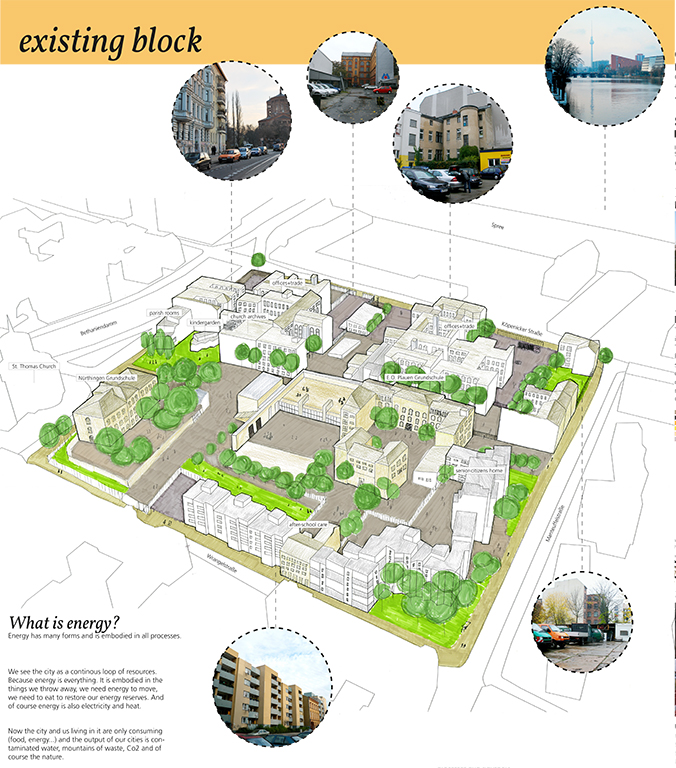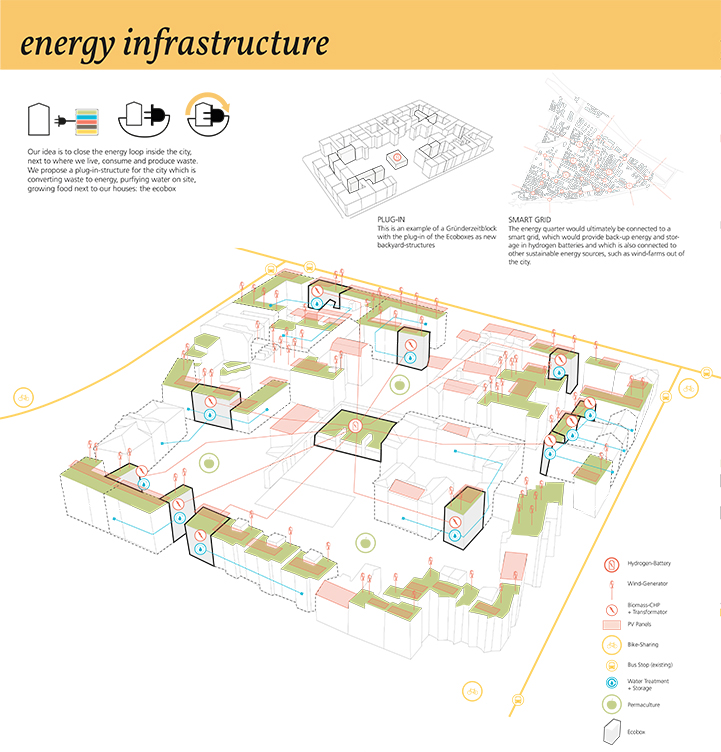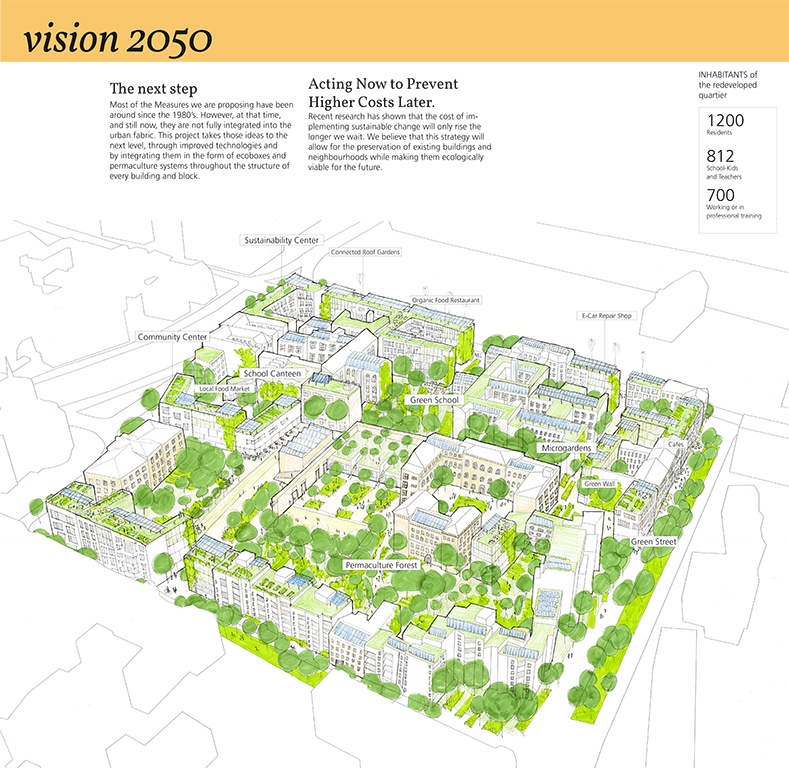Energy Plug-In
master studio project / competition entry / student award
There is a need of transforming the physical presence of German neighbourhoods and in order to achieve that we start from a mixed typical block. The existing Gründerzeit block is located at Kreuzberg, Berlin. It has buildings from earlier eras up through the postwar period. Inside the block are two primary schools – one state-run and one private.
The main idea is to close the energy loop inside the city with a plug-instructure converting waste to energy, purifying water on site, growing food next to houses; in the “ecobox”, which is an appendix to existing buildings. It is a flexible set of boxes, which plug into the existing building structure for a closed energy-cycle. The single boxes can be combined reacting to the local infrastructural needs. Through this the quality and historic value of the Gründerzeit buildings is preserved and the energy demand can be reduced using a broad set of actions. The energy quarter would ultimately be connected to a smart grid, which would provide back-up energy and storage in hydrogen batteries and which is also connected to other sustainable energy sources, such as wind-farms out of the city. The Ecobox-Toolkit is a flexible set of boxes which can be combined reacting to the local infrastructure needs.
If all quarters in Berlin had the energy efficiency of the proposed quarter, the ecological footprint per capita for Berliners might only be 2.5 global hectares thus getting us closer to the ideal 1.5 global hectares per capita for the entire planet.
supervised by Dr. Rafael E. Pizarro, Visiting Professor Of Urban Design
team: E. Harmel, X. Hu, T. Kuttler, M. Oikonomou, D. Schwab and H. Sparla
where: Faculty VI, Planning Building Environment, Technical University of Berlin
when: 2010-11
award:
2nd price in national student competition “EnergieQuartier - Gründerzeit der Zukunft” 2011, sponsored by the Federal Institute for Research on Building, Urban Affairs and Spatial Development and the Federal Ministry of Transport, Building and Urban Development, Germany
 3d perspective of the existing block.
3d perspective of the existing block.
Image Credits: E. Harmel, X. Hu, T. Kuttler, M. Oikonomou, D. Schwab and H. Sparla
 new energy infrastructure for the block.
new energy infrastructure for the block.
Image Credits: E. Harmel, X. Hu, T. Kuttler, M. Oikonomou, D. Schwab and H. Sparla
 vision 2050.
vision 2050.
Image Credits: E. Harmel, X. Hu, T. Kuttler, M. Oikonomou, D. Schwab and H. Sparla